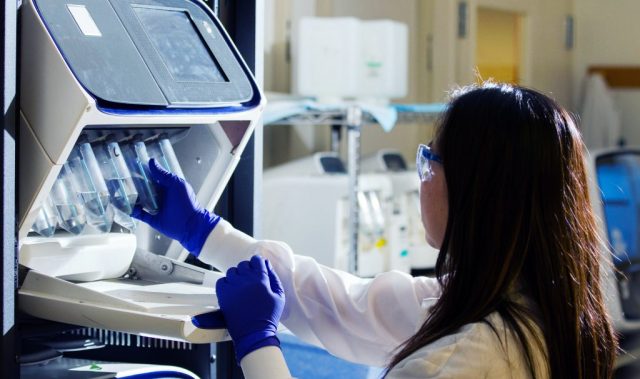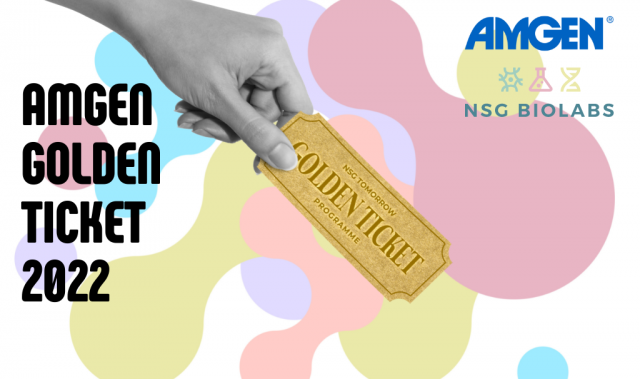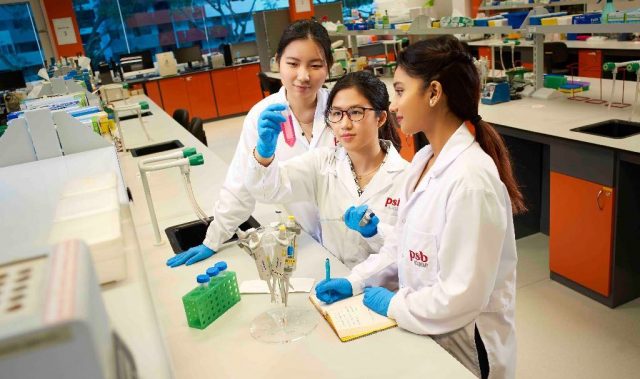
AsianScientist (Jul. 8, 2020) – Flip your shampoo bottle over and you will find a long list of chemicals printed on the back of it. If your product was made in the European Union (EU), however, you can be assured that the use of chemicals potentially harmful to human health or the environment is regulated. One of these regulations is called REACH, an acronym for Registration, Evaluation, Authorization and Restriction of Chemicals, which entered into force in June 2007.
But chemicals are not only found in shampoos. In fact chemicals which are potentially hazardous are found everywhere and are also used in making industrial products, making REACH relevant across industries from automotive manufacturing to petrochemicals and healthcare. In particular, biotechnology companies producing kits for molecular biology research or diagnostics, from DNA isolation to PCR to NGS, need to pay heed to REACH, as the regulation covers commonly used reagents like Triton-X 100, a detergent that is likely to be strictly regulated inside the EU starting 2021.
REACH was developed to mitigate the use of hazardous chemicals and the related risk to humans and the environment. Annex XIV to REACH contains a partial list of Substances of Very High Concern (SVHC) for which the use will be highly restricted in the future. The intention of REACH is to finally ban these substances from the EU after a transition period.
In this interview, we speak to Dr. Frank Narz, Associate Director Project Management at OEM by QIAGEN, a branch of QIAGEN that focuses on serving original equipment manufacturers (OEM) in the biotechnology sector. Dr. Narz shares how REACH impacts the production supply chain and the import and export of products to and from the EU. Dr. Narz reviews how OEM by QIAGEN’s expertise can help companies conduct responsible research, product development and manufacture.
Q: Who does REACH affect?
REACH affects not only European manufacturers and importers, but also any non-European manufacturers and distributers who wish to export their goods to the EU.
Q: Why does REACH affect QIAGEN and its OEM partners?
Chemical groups such as octylphenol ethoxylates (OPE) and nonylphenol ethoxylates (NPE)—e.g. Triton X-100 or Nonidet P-40, which are widely used in the molecular biology industry—are included in Annex XIV, a partial list of Substances of Very High Concern or SVHCs published by the European Chemicals Agency. The intention is to have OPE and NPE use in the EU, or in products imported into the EU, heavily restricted after the sunset date of January 4, 2021.
Q: What does REACH mean for users of SVHCs?
Without authorization, products that contain more than 0.1% of a SVHC listed in Annex IVX to REACH and which is not under a special exemption, will not be permitted in Europe after the sunset date. For example, no use, import or distribution in the EU of products that contain more than 0.1 percent OPE or NPE will be allowed come 2021.
Q: What are REACH Article 56(3) and Article 3(23)?
These articles include scientific research and development exemptions. The authorization requirement does not apply to the use of substances in scientific research and development, as long as the experimentation, analysis or chemical quality control is carried under controlled conditions (including emission rates and disposal methods) and in a volume of less than one ton per year. If the substance is necessary for an in vitro diagnostics method, it is also exempted within the aforementioned rules.
Q: What is the major impact of QIAGEN authorization for OEM customers?
A company that wishes to sell their products inside the EU has to be compliant with REACH. This means SVHCs from the Annex IVX list cannot be used in quantities above the threshold in their products.
If this company purchases materials containing Annex IVX SVHC from an EU supplier or manufacturer (such as QIAGEN), the company must ensure these suppliers have authorization to secure supply. QIAGEN has applied for this authorization. Part of the authorization process is to develop alternative formulas, so that SVHCs are replaced within the period defined in the authorization. QIAGEN has already started the R&D process.
Q: What is QIAGEN doing to ensure continued REACH compliance?
QIAGEN has applied for authorization following REACH guidelines to benefit from a transition period that will follow the sunset date. This authorization will allow QIAGEN to continue using SVHCs in a defined quantity, while updating the affected formulations.
Q: What does QIAGEN’s authorization application cover?
QIAGEN has applied for authorization to continue using OPE and NPE in in vitro diagnostics and life science kits used in hospitals, laboratories, universities and research facilities. We have also applied for authorization for industrial use by our OEM customers, so that products that depend on QIAGEN formulations can be passed down the supply chain.
QIAGEN applied in time to benefit from the transition period, so that it may use certain defined SVHCs after the sunset date until the EU commission issues its final decision. The QIAGEN authorization application includes import permission for its European sites to ensure supply security during the transition period.
Q: What are the plans for longer term compliance?
QIAGEN is also working on REACH-compliant replacements of the affected formulations. These alternatives must comply with our strict performance, quality and stability standards. We have started a development program for sample purification and assay technologies without OPE/NPE that cover the full supply chain from raw materials to end products, including PCR and NGS library preparation.
We hope to implement these new formulations as quickly as possible for environmental and economic reasons. When providing these new components to our OEM partners, we will provide samples, tailor solutions and support control and notification processes.
Q: What can OEM customers do to ensure REACH compliance?
Start by informing your European customers of the classification of OPE/NPE as SVHC for materials containing more than 0.1 percent and update your safety data sheets where required. Customers in the EU, should ensure that they and their end-user both meet the conditions of ‘zero-waste emissions’ and proper disposal practices. You should also label your products correctly according to ECHA guidelines, and stay up to date on any regulation changes. Last but not least, ensure you work with REACH-compliant suppliers.
Q: Why work with OEM by QIAGEN?
Outsourcing diverse components can be challenging and poses issues with quality, compliance, logistics, storage and costs. By consolidating your supply chain, you can simplify processes and reduce your budget. OEM by QIAGEN offers a vast portfolio of OEM components, whether off-the-shelf or tailored to your needs. QIAGEN also brings to the table its immense expertise with compliance, its strict quality control processes, and its experience with international delivery and manufacturing.
At OEM by QIAGEN, we know that supply chain security and compliance with laws and regulations are essential to the success of an OEM relationship. We are regularly updated on increasing regulatory requirements and will help to ensure your continued compliance.
For more information, click here to watch a webinar on REACH compliance by Dr. Frank Narz.
Asian Scientist Magazine is a media partner of QIAGEN.
———
Copyright: QIAGEN.
Disclaimer: This article does not necessarily reflect the views of AsianScientist or its staff.












